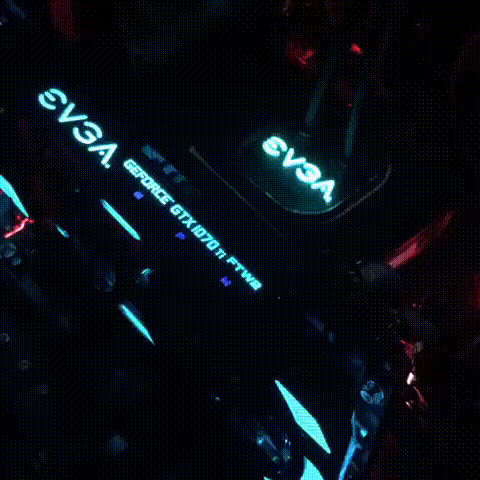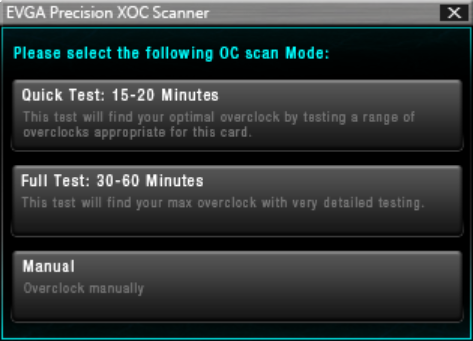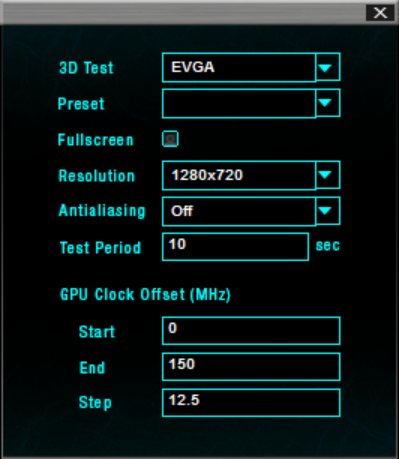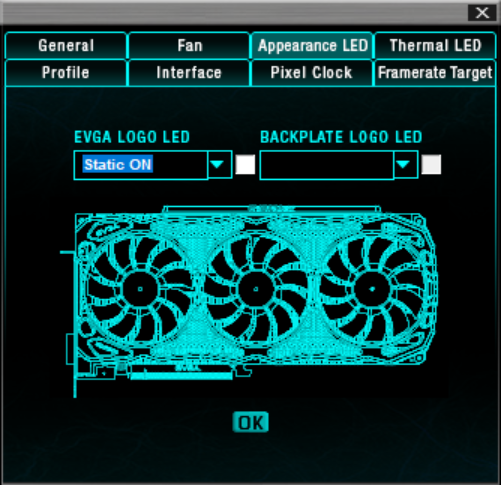The EVGA GeForce GTX 1070 Ti FTW2 Review: iCX Brings the Lights and Sensors
by Nate Oh on January 31, 2018 9:00 AM EST- Posted in
- GPUs
- EVGA
- GeForce
- NVIDIA
- GTX 1070 Ti
Meet The EVGA GeForce GTX 1070 Ti FTW2: Precision XOC
Considering that a lot of iCX features are neutered without it, Precision XOC is nigh-mandatory for, and essentially a software extension of, an iCX graphics card, which is not necessarily a negative. What makes this particularly relevant today is how the GTX 1070 Ti was positioned with respect to standardizing shipping clocks and promoting overclocking prowess. Several board partners ended up using their in-house overclocking utilities to advertise higher potential performance of their GTX 1070 Ti cards.
Naturally, EVGA incorporated Precision XOC for their semi-manual overclocking solution, developing a new single-step feature called “EVGA Precision XOC Scanner” or simply “XOC Scanner”, exclusive to the GTX 1070 Ti. While it differs from using OC ScannerX in the usual manner, it uses a series of automated OC ScannerX preset tests to apply an overclock. Simply starting Precision XOC for the first time will bring up a prompt to auto-overclock your GTX 1070 Ti, and after asking for the serial number, offer three different choices.
However, the in-application descriptions of the three options don’t make the end result very clear. In running XOC Scanner on our GTX 1070 Ti FTW2, the Quick Test results in an Offset overclock and the Full Test results in an overclocked voltage/frequency curve, but without adjusting any other element. Selecting Manual will send you to the regular Precision XOC application. But once there, running a Basic scan will bring up the three options again, while the Manual scan goes straight into voltage-frequency curve testing.
In effect, the XOC Scanner is applying the default OC Scanner settings almost like a preset, but changing the settings actually does change the parameters of the Quick and Full Test options.
In the overclocking section, we will see how these presets fare in benchmarks.
As discussed earlier, the other myriad features of the iCX system can be controlled from Precision XOC as well, namely configuration of LED colors and behavior.
To top even that, the LED Sync tool can coordinate lighting across EVGA graphics cards, closed-loop cooler, and chassis. Capping it off is the asynchronous fan control via separate sliders and fan curves.

LED Sync in action, posted by EVGA Product Manager Jacob Freeman (EVGA Forums)
But because the GTX 1070 Ti FTW2 iCX is the one EVGA GTX 1070 Ti card where eschewing Precision XOC means you’ve paid a premium for nothing, it’s almost safe to assume that Precision XOC will be used. And in that case, the auto-prompting XOC Scanner may as well be an inherent part of the GTX 1070 Ti FTW2 iCX package too, which is also not necessarily a negative. As far as how XOC Scanner works, the process is rather hands-off: you click a choice, a few tests happen, and once it’s over your card runs faster. Which sounds to be exactly what was intended.
















47 Comments
View All Comments
Dr. Swag - Wednesday, January 31, 2018 - link
Oh cool! Anandtech finally reviews some aftermarket gpus!If only we could actually, you know, buy them.
sharath.naik - Wednesday, January 31, 2018 - link
Whats with the gpu prices?!! I had bought 1080 ti for 660$ 8 months back, today its 1400$+, when trying to get a second one.Hereiam2005 - Wednesday, January 31, 2018 - link
I bought mine last week for 750$. Its a shitty 1080ti, the gigabyte gaming oc version, but it is much cheaper than other models.Dr. Swag - Wednesday, January 31, 2018 - link
Miners.JoeyJoJo123 - Wednesday, January 31, 2018 - link
Supply/Demand.People are pointing the finger at miners, but it's more than just an alternative coin mining issue. AIB partners are hesitant to make more cards because the last time GPU mining was big, GPU AIBs mostly sought to meet bigger supply to the bigger demand, only to get burned three-ways.
1) Bitcoin market crashed. This led to GPU demand faltering quickly.
2) They had already made their quarterly order to AMD/nVidia and were stuck with excess GPUs which they couldn't sell due to:
a) Miner card resale market providing cheaper cards to those at lower price brackets.
b) Lack of miner demand which the increased supply was supposed to meet.
c) New GPU architecture releasing the next quarter, while they were still stuck on lots of old GPUs.
3) Excess of warranty claims for excess GPU supply to miners.
AIB partners would be willing to increase their quarterly orders so as to increase GPU supply to meet increased demand (due to miners) if they could _assume_ stability in the demand, which fundamentally means assuming stability in the crypto market, but stability in the crypto market is a complete and utter joke, so they're not willing to increase supply especially if next-gen GPUs might be around the corner if AMD/nVidia have an announcement by next quarter (GTX1100 series, RX600 series, etc.)
JoeyJoJo123 - Wednesday, January 31, 2018 - link
Also, GPU pricing is also being affected by 3rd party sellers wanting to take advantage of the mining demand. 3rd party marketplace sellers on Amazon marketplace, Newegg marketplace, and eBay are also scalping excess GPU stock not to mine, but just to resell to gamers willing to fork over the money, but particularly to miners which can still recoup on the purchase, but will face a longer return on investment.Don't buy from 3rd party marketplace scalpers, they're just as guilty as miners (if not moreso, as they have no intent to even open the GPUs to use them for themselves) for draining supply from 1st party sellers, which prevents folk like you from getting rational prices.
Just wait for next gen cards, maybe. AIBs won't be shy to ramp up production of the newest stuff that miners and gamers will be sure to buy and can guarantee they won't be sitting on outdated stock.
Pinn - Wednesday, January 31, 2018 - link
Nvidia has volta, but AMD has nothing next-gen for awhile.VulkanMan - Wednesday, January 31, 2018 - link
AMD has Navi.CiccioB - Thursday, February 1, 2018 - link
Coming in 2019FreckledTrout - Wednesday, February 7, 2018 - link
AMD have Vega on 7nm coming this year. I wouldn't brush the move to 7nm off either is it should allow the GCN architecture to breath by hitting much higher clocks. Of course the proof is in the pudding but I expect the 7nm shrink to be a decent performance bump.